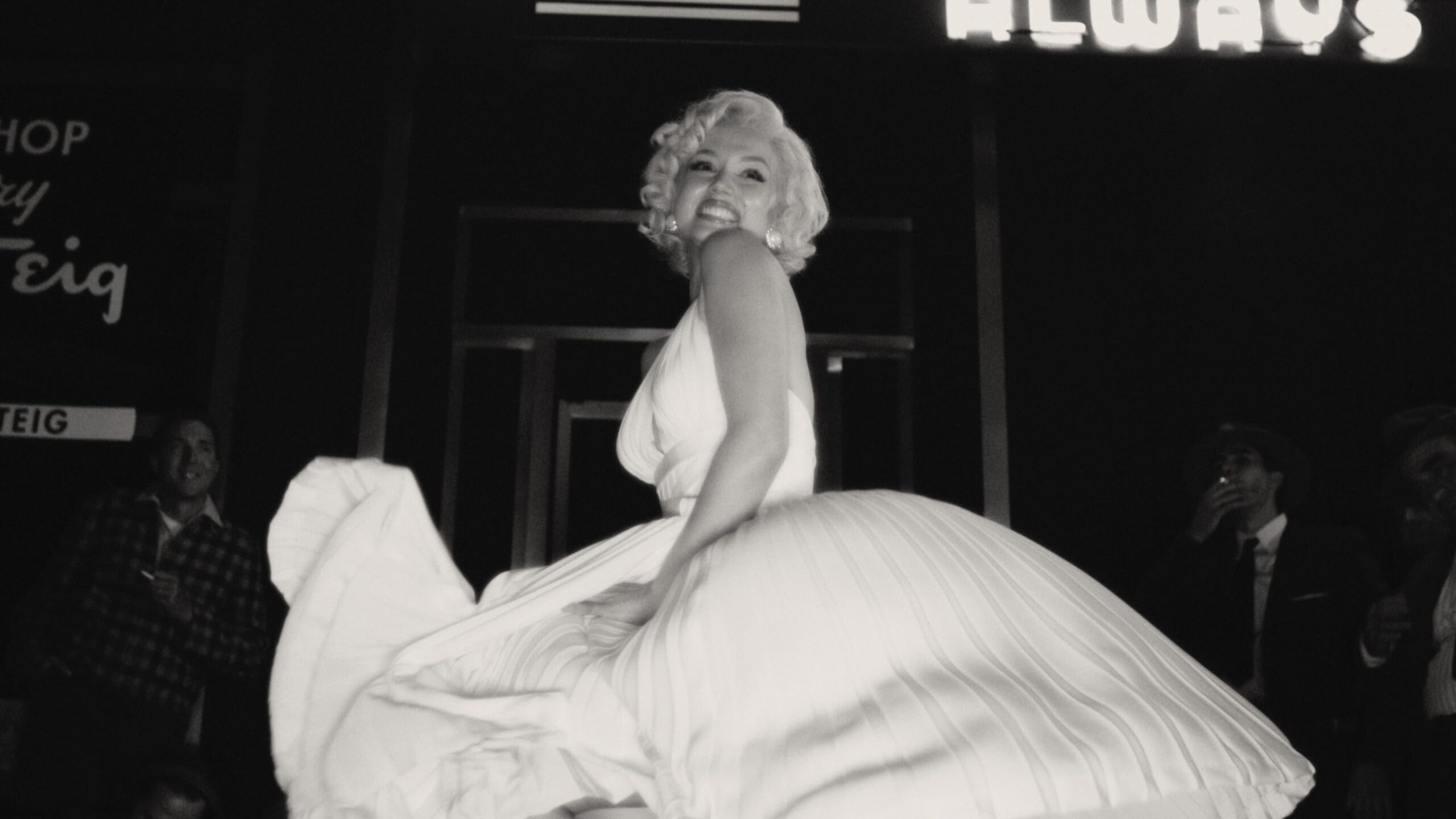
Blonde Film Review The film makes the complex star out of classics

During the promotion of Blonde lead actress Ana de Armas claimed she felt Marilyn Monroe’s presence on set. But why would this iconic sex symbol even bother to haunt when she’s given such generic treatment in this film about her life? The star’s name feels like an interchangeable label to stick on the character. Interspersed with surrealism, according to the biopic pattern, the highlights of her career are reviewed, preceded by moments from the difficult childhood of Norma Jeane (Monroe’s real name) in which her mother is admitted to a mental institution.
Marilyn Monroe also experienced mental health issues that ended with her tragic death. Director Andrew Dominik interweaves her inner fears in an associative way with the hard studio system. Important people and film productions from her life loom stiffly to disappear silently according to a scenario that eagerly uses ellipses in a non-factual interpretation of her life. The dark side dream factory fits seamlessly into Hollywood’s long-standing self-obsession in terms of theme, as seen, for example, in A Star Is Born . But Dominik doesn’t share director George Cukor’s sense of melodrama.

The empty spaces in which Monroe wanders harshly blur the line between reality and the film set, with the few hard-lit objects present further underlining the rough staging. It changes back and forth quite ad hoc from black and white to color. There is no doubt that Blonde , like the book of the same name that served as source material, purely wants to portray Monroe’s experience. A young woman destroyed by the studio system is reminiscent of David Lynch’s Mulholland Drive minus the effect, in this hallucinatory style, even when the well-known Hollywood Hill is on fire during a forest fire.
The cameras continuously crackle in her face, one of the many times that the film boldly underlines the contrast between staring men and their sex object. In one of those moments, they stare at her with gawky, wide-open mouths, something Lynch had at least been able to deal with with his more instinctive sense of kitsch.
With Dominik it remains ludicrous, just like the half-whispered voice-overs of the various men in Monroe’s life. Blonde cannot repeat often enough that she entered a toxic man’s world . The soulless recent music by Nick Cave and Warren Ellis provides an extra cosmetic layer that covers up the biggest problem with Blonde .
The film makes the complex star out of classics likeSome Like It Hot with an equally complex life to a template with which Dominik could have told stories about any person. Underneath all the posing as enigmatic there is clearly an urge to explain the phenomenon Marilyn Monroe and thus make it manageable. Showy, her bad childhood or the death of her two unborn babies serve as an explanation of her fears. As a result, they remain generic, which also applies to the overall emotional experience in Blonde , no matter how much De Armas brings those standard schemes with verve.







